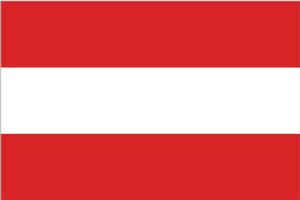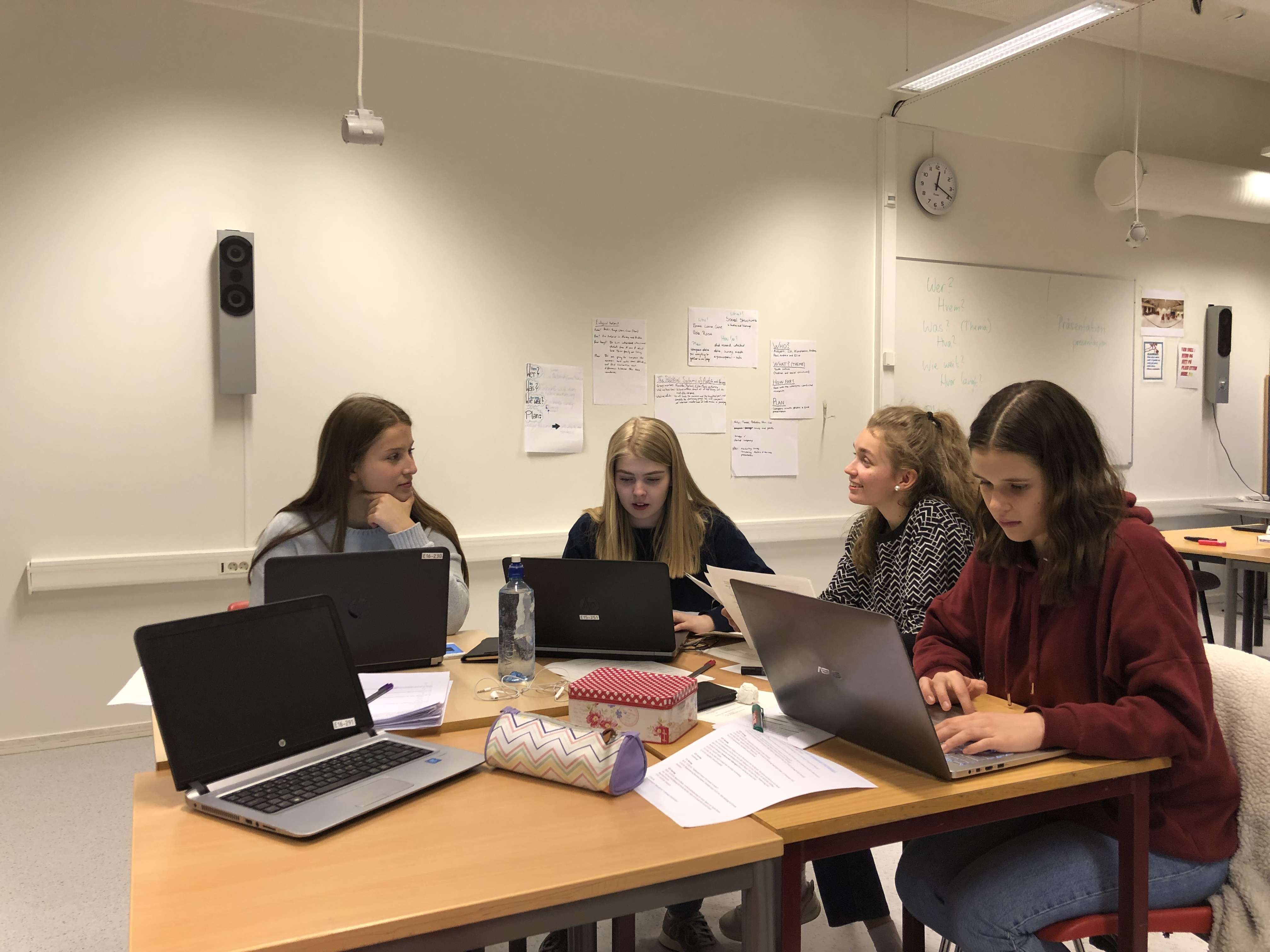Social Structures in Norway and Austria
Social structures in Norway and Austria


We chose the topic social structures because it affects our every day lives. One of the reasons we live different lives in different countries is because of the social structures that make up our surroundings. To get a better understanding of the cultures in our countries we need to study how the different social systems work. We are also interesed in the functionality of these systems and how pleased the general public is with them.
We focus on three main topics:
- The Education System - divided into three parts
- Education System in Austria.
- Education System in Norway.
- Comparison (similarities and differences) between the education system in Austria and Norway.
- Social and Economic Structures
- The Taxpayers and workers
Rosa (in the back, to the left), Emma (in the back, to the right), Gine (in the front, to the left) and Oda.
We are four girls working on the theme social structures. The Norwegian part of the group is the largest, with Emma, Gine and Oda who are all 18 years old. Rosa represents Austria, and she is 16 years old.
1. Education System in Austria
In Austria, everyone has to go to school for nine years, wich is in most of the cases between the age of 6-15. But most people go to school for 12 years, until they are 18. Only if you attend those 12 years and graduate, you will be able to study at a university.
The first four years of primary school is the same for everyone. But afterwards, you have to choose between two types of secondary schhool. NMS only lasts four years, while the gymnasium lasts eight. It's a big problem in Austria that children from financially more instable families, children of parents who haven't had higher education as well or immigrant's children often go to the NMS, while wealthier children, whose parents have studied themselves, usually go to a gymnasium.

Social and Economic Structures
We have focused mainly on the unemployment rate in Austria and Norway, as well as the HDI-index in both countries.
In this article we present some of the different sanctions and data in Austria;

In this article, we present some of the different sanctions and data in Norway;

This article about the Austrian social system was published in an Austrian online newspaper (derStandard.at). The article explains why the social system is different than in most other Western countries. It is a more conservative system, which means that it does give more money to the poor, it's not its aim to equalize everyone. Also, Austria has different retirement systems for some proffessions and about 20 different national insurances. The new government now wants to cut those down on a maximum of five.
Survey questions regarding the social structures in their respective countries
Do you think education should be cost-free?
- Yes
- No
Do you think the education system in your country is fair? (Based on religion, location, social class etc.)?
- Yes
- No
Do you plan on pursuing a higher education?
- Yes
- No
Do your parents have a higher education?
- Both
- Only mom
- Only dad
- Neither
Do you think the state spends too much on social services?
- Yes
- No
Are you satisfied with the social and economic services you receive?
- Yes
- No
Are you satisfied with the social and economic services unemployed receive?
- Yes
- No
Do you feel secure that the government will care for you financially if needed?
- Yes
- No
Do you think the social structures in Norway encourages the public to do their best in the work field?
- Yes
- No
I think we should….
- Pay more taxes
- Pay less taxes
- Pay the same amount of taxes we do today
Do you feel that you receive something back from the taxes you pay?
- Yes
- No
Are you satisfied with how the state spends the tax money?
- Yes
- No
What is in your opinion the most important reason to work?
- Money
- Contributing in society
- Social life and colleges
- Something useful to spend your time on?
- Support your family
- Other
We collected and compared the data from the surveys and created Graphs to make the Information visible. Here are the ones we find the most interesting:
This link shows all of our statistics put into bargraphs;
Work in Progress
Even though we have worked hard on this project, we have also had a good time.
Evaluation of our project and cooperation
As a group,
we are pleased with the finished result of our common project. We have all participated
in the project, and shown a genuine interest for the topic we have chosen. Working
on a project across different countries has been challenging, but we still believe
the outcome is quite thorough and representative for the two nations we represent.
As a group we have all learned a lot through this project, and feel more enlightened
on the topics of education, taxes and unemployment than previously. The cooperation
within the group has been great since all group members have been willing to put
a lot of work and passion into the project. As you clearly can tell from our blogspace
we have chosen different ways and means of presenting our research. We have statistics
from a survey in different forms of graphs, we have a PowerPoint presentation and
multiple texts and as a result of the different presentation methods, our research
is diverse. The project has been time-consuming, and is in no ways fault free, but
all in all we are proud of the completed product.







Kommentare
Kommentar veröffentlichen